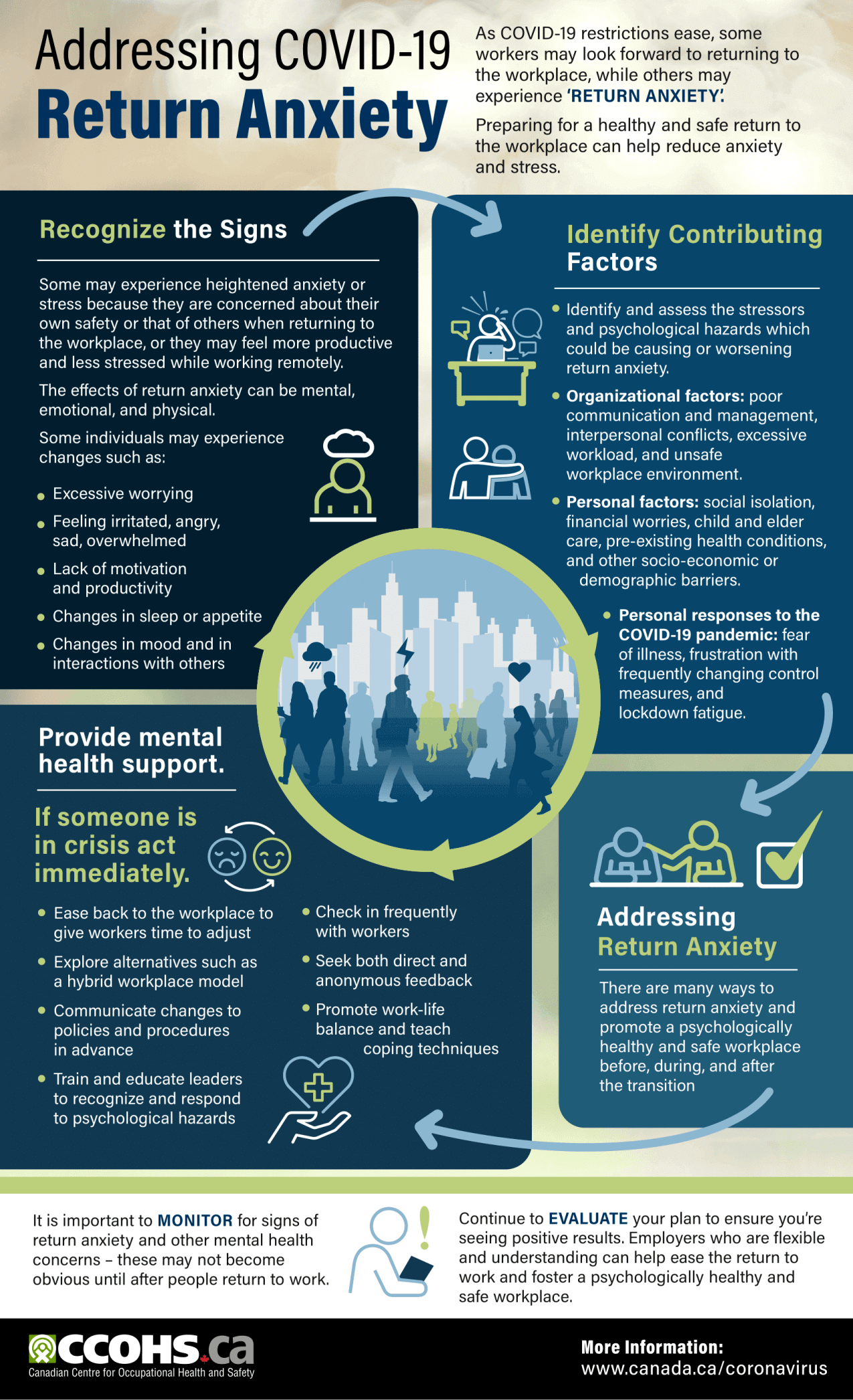Addressing COVID-19 Return Anxiety and its text description

Description: Addressing COVID-19 Return
Anxiety
Recognize the Signs
Some may experience heightened anxiety or stress because they are concerned about their own safety or that of others when returning to the workplace, or they may feel more productive and less stressed while working remotely.
The effects of return anxiety can be mental, emotional, and physical.
Some individuals may experience changes such as:
- Excessive worrying
- Feeling irritated, angry, sad, overwhelmed
- Lack of motivation and productivity
- Changes in sleep or appetite
- Changes in mood and in interactions with others
Identify Contributing Factors
Identify and assess the stressors and psychological hazards which could be causing or worsening return anxiety.
- Organizational factors: poor communication and management, interpersonal conflicts, excessive workload, and unsafe workplace environment.
- Personal factors: social isolation, financial worries, child and elder care, pre-existing health conditions, and other socio-economic or demographic barriers.
- Personal Responses to the COVID-19 pandemic: fear of illness, frustration with frequently changing control measures, and lockdown fatigue.
Address Return Anxiety
There are many ways to address return anxiety and promote a psychologically healthy and safe workplace before, during, and after the transition:
- Provide mental health support. If someone is in crisis act immediately.
- Ease back to the workplace to give workers time to adjust
- Explore alternatives such as a hybrid workplace model
- Communicate changes to policies and procedures in advance
- Train and educate leaders to recognize and respond to psychological hazards
- Check in frequently with workers
- Seek both direct and anonymous feedback
- Promote work-life balance and coping techniques
It is important to monitor for signs of return anxiety and other mental health concerns – these may not become obvious until after people return to work.
Continue to evaluate your plan to ensure you’re seeing positive results. Employers who are flexible and understanding can help ease the return to work and foster a psychologically healthy and safe workplace.
Document last updated on: 2022-03-16

